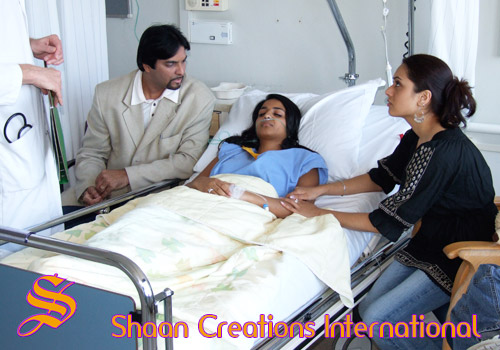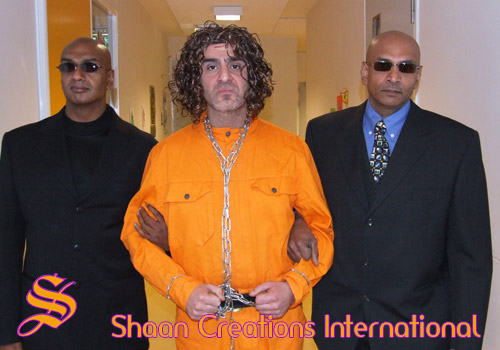Films
Shaan Creations International is also a production company for films. So far we have produced three films:
COLORS OF LIFE: a Dutch film that deals with the consequences of hiv/aids among the young generation. And how the older generations deals with it. The content of the movie is based on real life events. The movie has been screened in many schools in The Netherlands and Suriname.
SILENT TEARS: a Dutch film that deals with suicide prevention. The content of this movie is also based on real life events. The screening of this movie has been very succesful in The Netherlands and Suriname mainly in the schools. It’s content is very informational and educational.
AMBAR: an English movie that describes the journey of three young female advocates at the starting of their careers. Their enthusiasm and their fight for justice. A very lighthearted movie with a modern setting. This movie has a cast ensemble of different actors from different fields. Also we have artists from Mauritius working in the movie.
Besides feature films, Shaan Creations International also produces short training films with several social themes such as:
SUICIDE: is a reasonable big social problem in The Netherlands as well as other countries like: India, Suriname, USA and almost every other country in the world. Young people in the prime of their lives, take a step to end their life. This is very disturbing whatever the reason may be. We have to inform people in the society to stop this from happening. They should know that there is always help available and their problems can be solved. We have to protect our society from getting polluted and save lives.
PARENTING: is so essential and important for children in their youth. And this is no easy task for parents. They have to find the right balance between being tolerate and being strict, in creating boundaries for their children, feeding them with the right information and guiding them to the right path of life. There is a lot to learn, even for the parents. Parenting is a very complex and sensitive subject for all, young and old.
SCHOOLING: is very important for children. Not only in choosing the right school, but also a good relationship with the teachers, the discipline in doing their homework, the involvement of the parents in the process of stimulating and encouraging their children, in choosing the right subject and field of study. Schooling is not only the time children spend in the school, but a big part of what goes on at home as well.
TEACHER PARENT RELATIONSHIPS: is an indispensable factor in the success of children at school. A healthy relationship between parents and teachers means a good communication line between them in the wellbeing of the children. Parents should feel free to express their emotions to the teachers about their children and they should welcome the feedback they get from the teachers about their children. That’s how they can influence the process of good schooling of their children. A good teacher parent relationship is beneficiary for all.
DYSLEXIA: dyslexic people are highly creative, intuitive, and excel at three-dimensional problem solving and hands-on learning. Dyslexia is a learning problem some kids have, which makes it tough to read and spell. The problem is inside the brain, but it doesn’t mean the person is dumb. Plenty of smart and talented people struggle with dyslexia. But dyslexia doesn’t have to keep a kid down. With some help and a lot of hard work, a kid who has dyslexia can learn to read and spell. It is caused by an impairment in the brain’s ability to translate images received from the eyes or ears into understandable language. It does not result from vision or hearing problems. It is not due to mental retardation, brain damage, or a lack of intelligence.
ADHD: is a medical condition that affects how well someone can sit still, focus, and pay attention. People with ADHD have differences in the parts of their brains that control attention and activity. This means that they may have trouble focusing on certain tasks and subjects, or they may seem “wired,” act impulsively, and get into trouble. Although ADHD begins in childhood, sometimes it’s not diagnosed until a person is a teen — and occasionally not even until someone reaches adulthood. Because ADHD is a broad category covering different things — attention, activity, and impulsivity — it can show up in different ways in different people.
AUTISM: is a word that refers to a wide range of developmental disorders that some people are born with or develop in the first 2 years of life. This group of disorders makes up what doctors call the autism spectrum. Someone whose condition falls within the spectrum has an autism spectrum disorder (ASD). Autism affects the brain and makes communicating and interacting with other people (chatting, playing, hanging out, or socializing with others) more difficult. People on the autism spectrum often have trouble talking and understanding language from an early age. It can be hard for them to play games and understand the rules when they are kids. As they become teens, people on the autism spectrum might have trouble understanding what clothes are cool to wear, or how to play sports, or how to just hang out and talk.
UNCERTAINTY AND ANXIETY: tt’s completely normal to worry when things get hectic and complicated. But if worries become overwhelming, you may feel that they’re running your life. If you spend an excessive amount of time feeling worried or nervous, or you have difficulty sleeping because of your anxiety, pay attention to your thoughts and feelings. They may be symptoms of an anxiety problem or disorder. Anxiety is a natural human reaction that involves mind and body. It serves an important basic survival function: Anxiety is an alarm system that is activated whenever a person perceives danger or threat. When the body and mind react to danger or threat, a person feels physical sensations of anxiety — things like a faster heartbeat and breathing, tense muscles, sweaty palms, a queasy stomach, and trembling hands or legs. These sensations are part of the body’s fight-flight response. They are caused by a rush of adrenaline and other chemicals that prepare the body to make a quick getaway from danger. They can be mild or extreme.
TEASING AND BULLYING: every day thousands of teens wake up afraid to go to school. Bullying is a problem that affects millions of students, and it has everyone worried, not just the kids on its receiving end. Yet because parents, teachers, and other adults don’t always see it, they may not understand how extreme bullying can get. Bullying is when a person is picked on over and over again by an individual or group with more power, either in terms of physical strength or social standing. Two of the main reasons people are bullied are because of appearance and social status. Bullies pick on the people they think don’t fit in, maybe because of how they look, how they act (for example, kids who are shy and withdrawn), their race or religion, or because the bullies think their target may be gay or lesbian.
CHILD ABUSE: abuse can be physical, sexual, emotional, verbal, or a combination of any or all of these. Abuse can also be neglect, which is when parents or guardians don’t take care of the basic needs of the children who depend on them. Physical abuse is often the most easily recognized form of abuse. Physical abuse can be any kind of hitting, shaking, burning, pinching, biting, choking, throwing, beating, and other actions that cause physical injury, leave marks, or cause pain. Family violence can affect anyone. It can happen in any kind of family. Sometimes parents abuse each other, which can be hard for a child to witness. Some parents abuse their kids by using physical or verbal cruelty as a way of discipline.
DOMESTIC VIOLENCE: is a type of abuse. It involves injuring someone, usually a spouse or partner, but it can also be a parent, child or other family member. Domestic violence is a serious problem. It is a common cause of injury. Victims may suffer physical injuries such as bruises or broken bones. They may suffer emotionally from depression, anxiety or social isolation. It is hard to know exactly how common domestic violence is, because people often don’t report it. There is no typical victim. It happens among people of all ages. It affects those of all levels of income and education.
Share Shaan
SHAAN SEARCH
SHAAN CALENDAR
| S | M | T | W | T | F | S |
|---|---|---|---|---|---|---|
| 1 | 2 | 3 | 4 | 5 | 6 | |
| 7 | 8 | 9 | 10 | 11 | 12 | 13 |
| 14 | 15 | 16 | 17 | 18 | 19 | 20 |
| 21 | 22 | 23 | 24 | 25 | 26 | 27 |
| 28 | 29 | 30 | 31 | |||
SHAAN POSTS
SHAAN COMMENTS
- Sharika Binesrie on Protected: SCI Contact
- Jason Surujbali on Videos Suriname
- Tjokrodikromo Marlene on SMC Training




